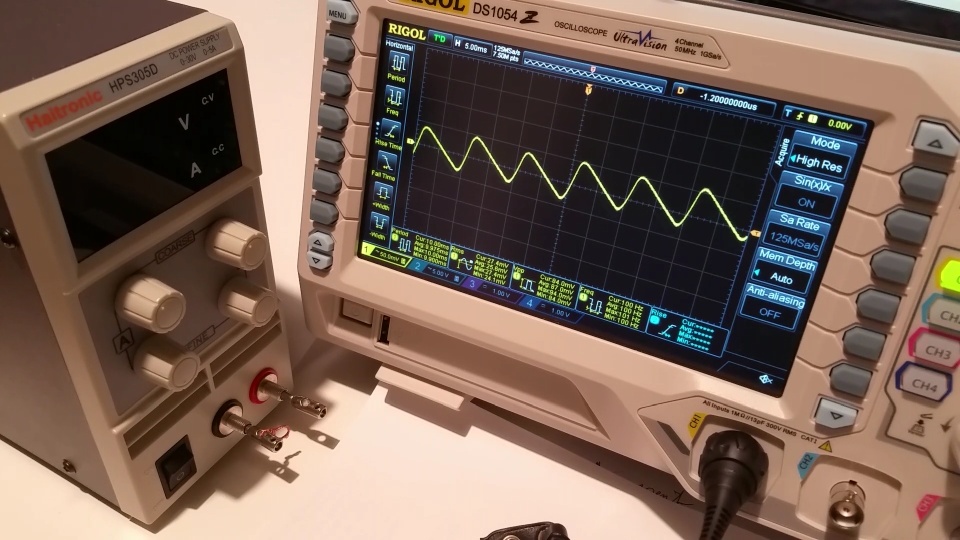When chasing mV's one needs to ask: are they really there and do they really matter ?
Have a look for Daves 2 vids on Why DSO's appear to be noisy?
Yes, I saw that one!
for linear the noise and ripple frequency should be @ 2x your mains frequency so how you set your scope is very relevant to what you're trying to measure.
I saw this on a bad ex-regulated linear power supply

There is the regular frequency @100Hz, but no noise at all: does this mean I have a very clean mains line?
"so how you set your scope is very relevant": what do you mean? How should it be set?
PSU noise components that matter will be under a few 100 KHz and remove the DC component by using AC coupling only.
Ok, I did, but I'm finding difficult to read the real ripple, as it's a different shape other than classic of i.e. the linear transformer of previous pic1.
Let's see another "normal" ripple of a portable power switching @12V:

There is the classic ripple shape and this time there is noise on the peak quite every 100Hz, not so precise. Why here there is the noise @100Hz and in the linear transformer not?
I measured it @13mV, noise repetitive peaks are about 300mV.
Frequency this time is oscillating and not multiple of 50Hz: it's about 83Hz.
Anyway this shapes are easy to measure...
Instead look at these other two power switching:
1)

has a frequency of 77kHz and it goes also under the "0 line" like a real complete AC wave. This time the ripple is the complete big wave pp apart the sporadic noise peaks at the rising of the wave, or only an average of it under the big beginning of the wave?
I measured the big wave @30mV-46mV. It's also not regular and constant like the previous...
And this one should have a declared spec of <0.5mVrms !! Even measuring it in Vrms they are 7-8mVrms, not 0.5!
Or maybe I'm not using perfect probe measurements, that's a reason I would like to try the pseudo differential method, with no luck... next posts...
EDIT:
I made also this zoomed snapshot from oscillo + params in the attachements:

2) Anyway, look at this other power switching for minipc:

it has a frequency of 100Hz, a lot noisy, but very different from pic2...
And here what should be the ripple? The great big noisy wave at 100Hz pp, or only the central part between the big waves?
Central part is a good 3.5mV ripple BUT including repetitive spikes, otherwise without them is less than half, about 2mV, but even here it's not that easy to measure, not clear edges...:

instead big pp are about 11-12mV, without spikes:

Which one?
You will tell me: put average!
Well, I did but this time did'nt solve a lot... it was again a lot peaky, not easy to measure...:

All @12V DC without load. Imagine with load!
PS @webmaster:
it should be better to alert the poster when he's inserting attachments for the 2Mb limit, not after he posted and then return back to insert all pics again...
PS2:
is there a way to insert attachments pics inline with text? It should be a lot better. Otherwise one should upload them on another server and then put the link: better if possible inside the forum itself.
EDIT:
ok, thanks to tautech's suggest it's possible to put attachment inline, but it should be better to make an automated procedure like in other forums, avoiding copy and paste of addresses. More, in the modify you can't read the adresses, so you must keep a browser's tab open to copy them into the other modify tab... a bit tricky.